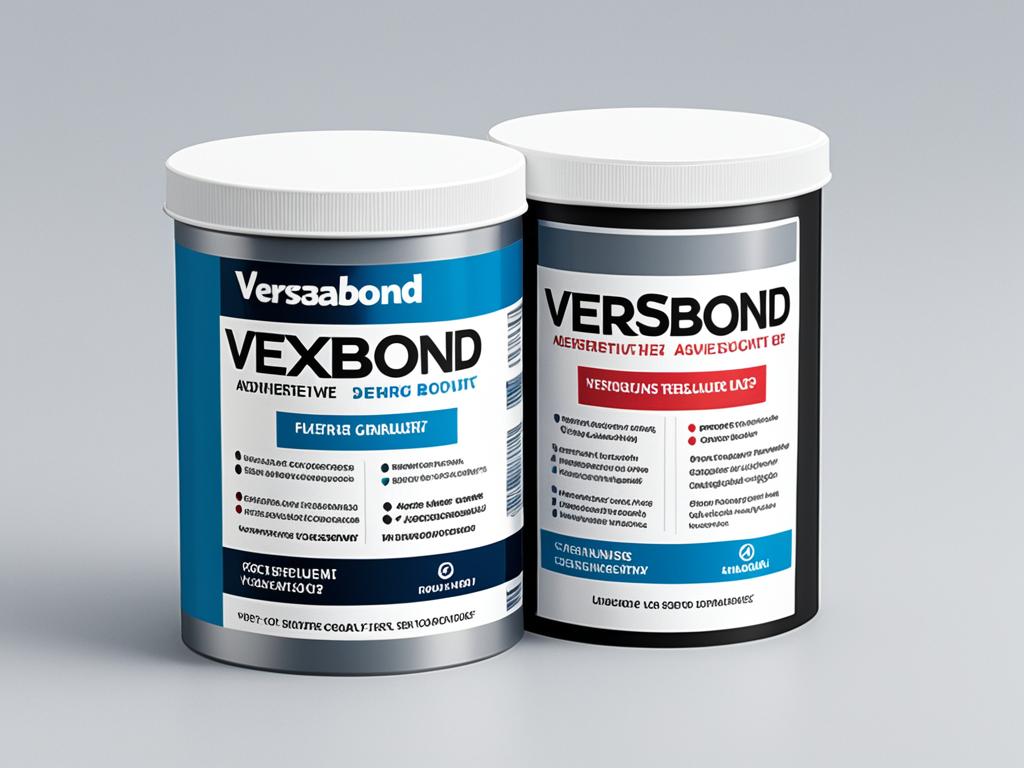Choosing the right adhesive for your tiling project can be a daunting task, especially with the wide range of options available. Among the popular choices in the market, VersaBond and FlexBond stand out. But when it comes to deciding between the two, which one should you choose? Let’s compare the features, performance, and suitability of these adhesives to help you make an informed decision.
Key Takeaways:
- VersaBond and FlexBond are popular thinset mortars used for tile installation.
- VersaBond is suitable for smaller tiles and offers better bonding strength and flexibility.
- FlexBond is designed for larger, heavier tiles and minimizes sagging during installation.
- The choice between the two depends on factors like tile size, application surface, setting time, and budget.
- VersaBond is generally more affordable, while FlexBond offers a shorter setting time.
Features and Performance Comparison
When deciding between VersaBond and FlexBond for your tiling project, it’s essential to understand their individual features and performance characteristics. Here’s a detailed comparison:
VersaBond
VersaBond is an all-purpose thinset mortar that offers versatility and a longer working time. It is engineered with smaller sand grains, which makes it well-suited for smaller tiles.
One of VersaBond’s key advantages is its modified formula, which enhances its bonding strength and flexibility. This makes it suitable for various applications, including granite, marble, porcelain, and plywood subfloors.
With VersaBond, you can achieve strong and durable tile installations that can withstand the test of time.
FlexBond
FlexBond is a medium bed mortar specifically designed for large format tiles. It features larger sand grains, giving it the ability to handle heavier and larger tiles with ease.
One of the standout features of FlexBond is its ability to minimize sagging during tile installation. This characteristic is particularly important when working with larger tiles, as it ensures a level and quality installation.
FlexBond offers excellent adhesion properties and can be used on a variety of surfaces, making it a versatile option for different tiling projects.

Choosing the Right Adhesive
When it comes to deciding between VersaBond and FlexBond for your tiling project, several factors should be considered to make an informed choice. Here are some key differences to help you decide which adhesive is the better fit for your needs.
Firstly, the size of your tiles plays a crucial role. For smaller tiles, VersaBond is a suitable and reliable choice. On the other hand, when dealing with larger and heavier tiles, FlexBond is recommended due to its enhanced strength and support.
Secondly, consider the application surface where the tiles will be installed. VersaBond is known for its versatility, as it can be effectively used on various surfaces, including granite, marble, porcelain, and plywood subfloors. In contrast, FlexBond is specifically designed for applications such as large format tiles, ensuring a secure and durable bond.
Another aspect to consider is the setting time. If you are looking to complete your tiling project quickly, FlexBond offers a shorter setting time, allowing for faster progress. On the other hand, if you value the flexibility to make corrections and adjustments during the installation process, VersaBond’s longer working time is an advantage.
Finally, budget concerns are always an important consideration. VersaBond is generally more affordable than FlexBond, making it a cost-effective option for homeowners who want to achieve high-quality results while keeping expenses in check.
